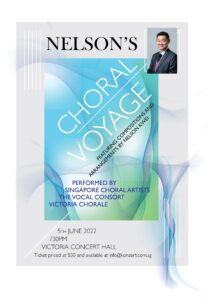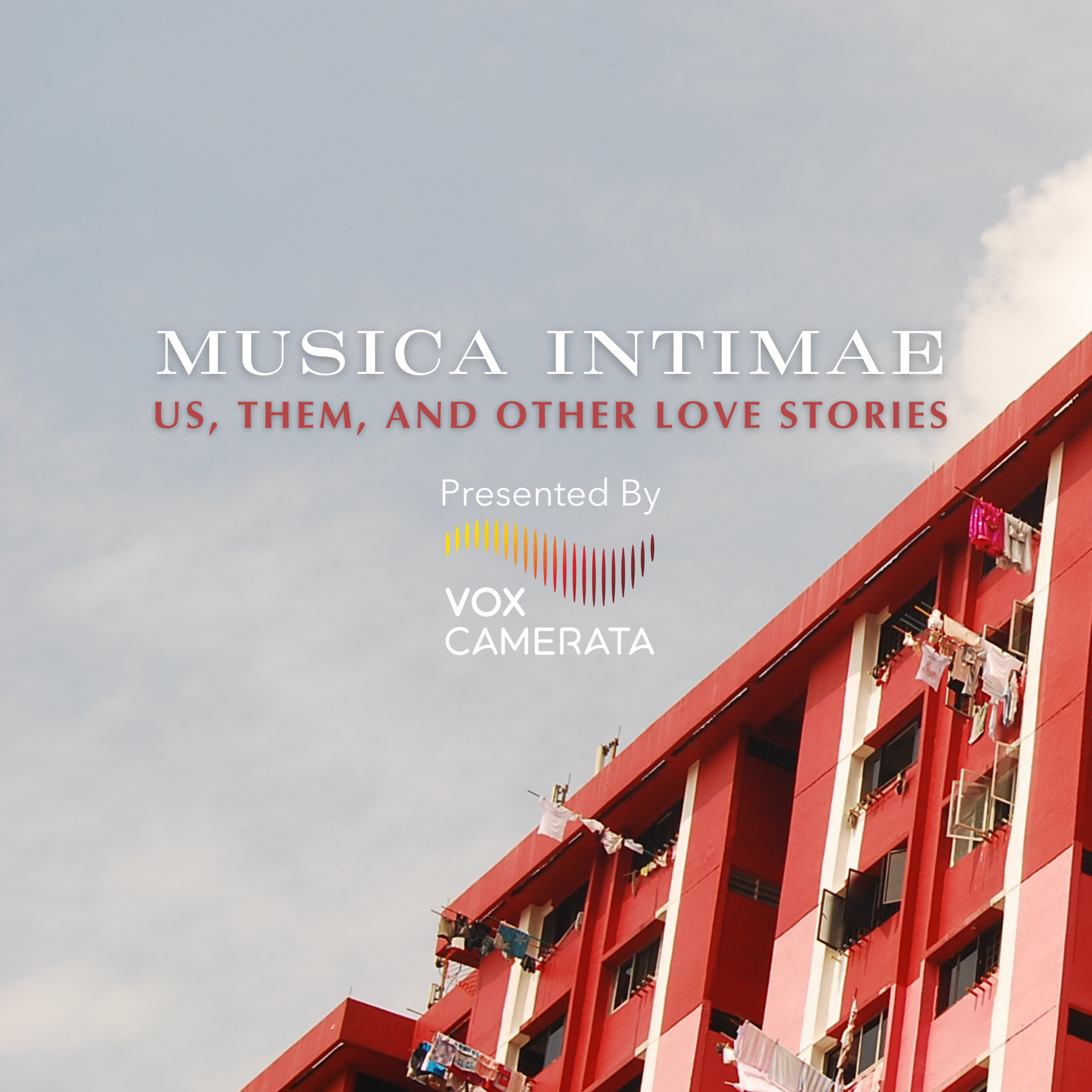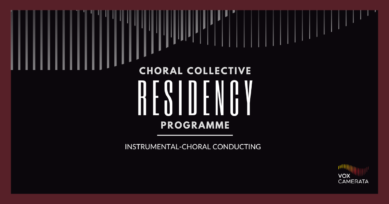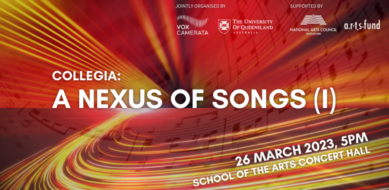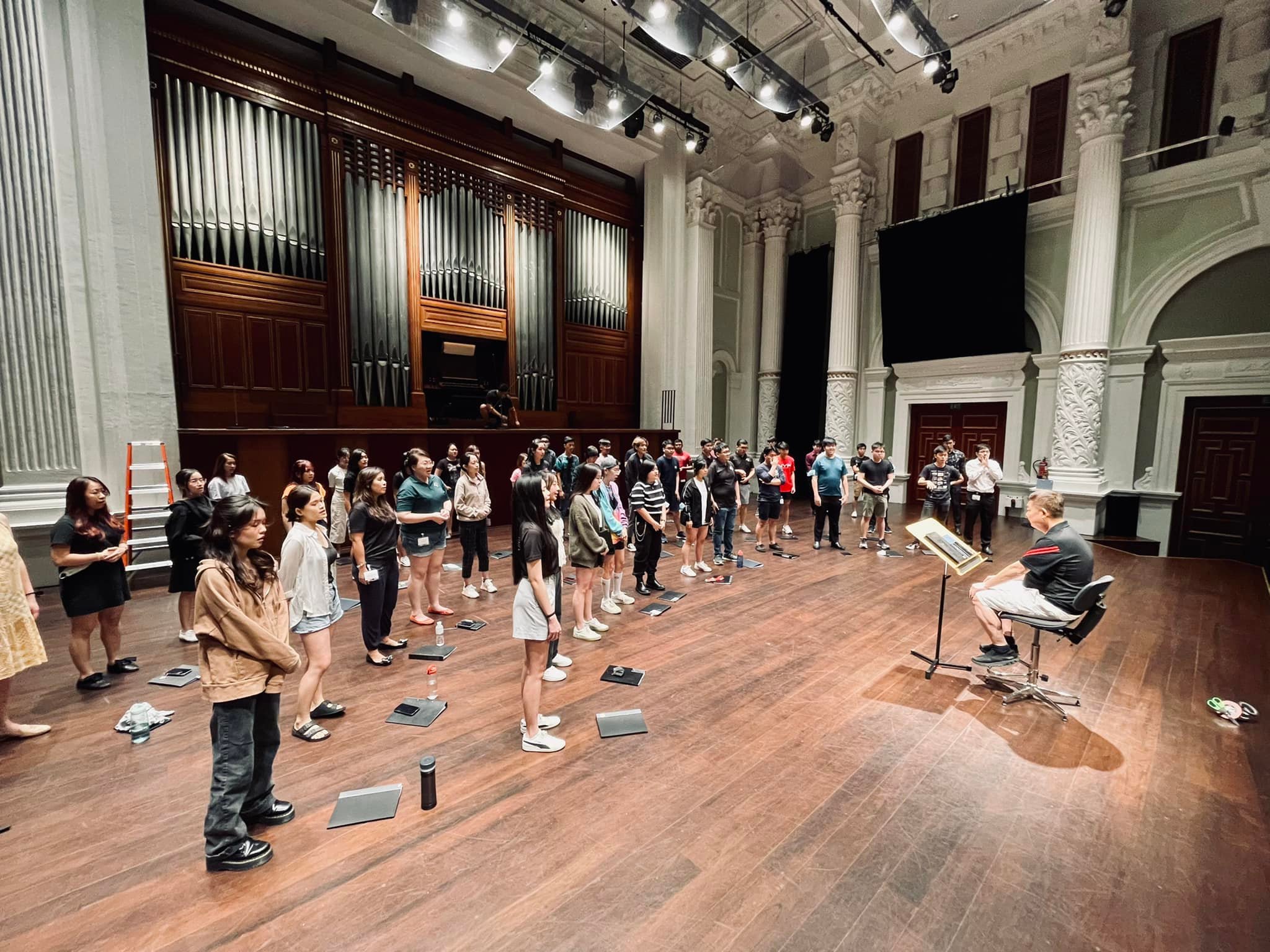
Vox Camerata’s Associate Conductors, Samantha Wee and Sun Boxi, reflect on possible new ways of performing and presenting choral music in a post-COVID future with Nelson’s Choral Voyage.
Mr. Nelson Kwei is primarily celebrated in Singapore and beyond for his work as an award-winning choral conductor and an adjudicator of international choral competitions. Nelson’s Choral Voyage is a celebration of his legacy as conductor, composer and arranger- the culmination of Kwei’s journey and highlights his other contributions to Singapore’s choral music scene, namely in the field of composition and arrangement in the form of a concert.
Overall, the concert was a good showing for two reasons. Firstly, the ensembles were technically proficient, despite choirs just coming out of the safety management measures (SMM) due to the COVID-19 pandemic. Secondly, and more importantly, was the masterful and heartfelt way in which Kwei shared his journey and insights in his creative process. His beautiful articulation and animated presentation guided the audience into the realms of nostalgia and the memories of yester-years.
While the repertoire brought us valuable insights into Kwei’s musical style, such composer-centric concerts run the risk of sounding homogenous. Given the Sino-centric aural space that all the pieces occupied, we felt that in terms of programming, there was limited artistic variety, both in colour and in the presentation of the repertoire. As such, we will discuss how the performance shows both musical finesse and the potential for better intercultural engagement.
Kwei started the evening by sharing the fond memories of his childhood that were the inspiration and the backdrop for his composition Triptych in Mandarin. While his lyrical narration certainly added meaning via the nuances within piece’s native language, a summarized translation of the context would have been useful to enable non-Mandarin-speaking audience members to better appreciate his pieces. The Vocal Consort then sang “心里的小百合 Lily In My Heart” and “丝方尽、泪始干 A Father’s Love,” two of the three pieces forming the ‘Remembrance’ Triptych. These two pieces were followed by a familiar tune, “细水长流,” which filled many audience members in the concert hall with nostalgia.
The next choir to take the stage was the Victoria Chorale performing three pieces, namely “一步一步来,” an arrangement of three Malay folk songs titled “Malay melodies,” and “My Harvest, My Land.” We saw Kwei’s mastery of the subject matter in “一步一步来”, which narrates the life of an ordinary Singaporean from childhood to adulthood. Certain texts were delivered in styles that were contextually appropriate to illustrate highs and lows of life, breaking away from what is usually considered an aesthetic form of choral singing. The tasteful change from the Sopranos into a mimicry of a young boy as he promised to “明天考天才” (ace the examinations tomorrow) and the brief skit of Malcolm Sujeeth Ravindran playing the role of an exhausted working adult as the family “没钱生小乖乖” (lacks financial capacity to have a baby) exemplify how Kwei’s interpretations synergise music and text to deliver a lasting impression to the audience.
While “一步一步来” was masterfully executed, the following piece, “Malay melodies,” leaves some room for discussion. First, we deeply appreciate that Kwei used this opportunity to include non-Chinese works in an effort to diversify the repertoire. That said, this may have been a missed opportunity for greater intercultural engagement. The arrangement choices of “Malay melodies” showcases a need for cultural sensitivity and understanding of the cultural form to provide authenticity to the performance, specifically “Burung Kakak Tua,” the second piece of the three that form the “Malay melodies” medley. As non-Malay individuals, we were unsure if there is a cultural significance for the modal shift from major to minor, and subsequently if such treatment of the cultural material is deemed to be appropriate in relation to the ethnic source of said music. We wondered if it was to be read in an ironic or comical manner (did the bird die?), and if the form would be seen as being untrue to the narrative. Perhaps a short exposition could have aided in adding clarity to Kwei’s treatment of cultural material not of his own. In addition, naming the collection of three Malay songs “Malay melodies” while the Mandarin pieces were allowed individuality did not sit quite right.
Next, the combined Male Chorus from all three performing groups presented “A Montage,” displaying a strong, balanced sound, and good dramatic performance from soloist Malcolm Sujeeth Ravindran. The next piece, “海的故事 Stories of the Sea,” was presented by the combined Female Chorus from the three performing groups. We found that the combined Female Chorus was not as tight an ensemble as the combined Male Chorus. To be fair, achieving a sense of balance and blend for female choruses has always been challenging due to the nature of the female voice.
The final group to take the stage was the Singapore Choral Artists as the newest ensemble of the evening, having been founded during the pandemic. They presented three Latin works by Kwei: “Ave Verum Corpus,” “Ubi Caritas,” and “Levavi Oculos Meos in Montes.” Though all three works aimed at exploring a different style from the predominantly Asian works in the repertoire thus far, the harmonic language and the musical structure did not vary significantly from the earlier pieces. The Singapore Choral Artists then presented the final piece in the ‘Remembrance’ Triptych, “小时候 Yesterday I was Young.” The warm and sincere performance of a piece written to evoke heart-warming childhood memories was a fitting way to close the Triptych and indeed the concert.
The transition between the choirs and pieces in the concert was facilitated by the emcee, Ethan Chia. Kwei complemented Ethan’s announcements by sharing extensively about his childhood and how it shaped his ‘Remembrance’ Triptych. Whilst the emcee clearly served his intended purpose with confidence and clarity, we see the potential for the emcee to play a bigger role in the concert than to merely announce what is coming up next in the programme. Especially with a concert that has an inherent narrative of “Nelson’s Choral Voyage,” to attempt storytelling via the emcee, be it by a separate person or Kwei himself, would have further enhanced the overall concert experience.
Another point for consideration is regarding the presentation of the ensembles. We note that having a variety of costumes has been a long-standing tradition of Kwei’s ensembles, often featuring his choirs switching from their usual concert attires of blazers and gowns in the second half of their performances. While there was no second half in this concert, the variety in attire was achieved by the Singapore Choral Artists, who went on stage in a multitude of ethnic wear from different ethnic groups native to the Asian continent. Given the impression from the performance and the concert booklet that this was to be the “uniform” for Singapore Choral Artists, we found the visual representation of the ensemble somewhat problematic. As an ensemble positioned to represent Singapore, to have members onstage with yukata and hanbok might be construed as inappropriate since it comes from a cultural origin that is foreign to both the members of the ensemble and the ensemble itself. Whilst there is a clear attempt to forge a different path from the cliched suits and gowns that dominated local choral attire, this approach can be seen as culture appropriation, failing to represent the multicultural realities of the nation that the ensemble aims to represent.
Lastly, we note that the impact of COVID-19 continues to be seen in the choral sector. We know of several singers who were unable to perform due to having caught COVID-19, leading to a lack of aural balance for some of the ensembles that performed. Also, the effects of “long COVID” are now beginning to rear its ugly head within the local choral community. Many choirs are beginning to grapple with singers being unable to perform to the best of their ability thanks to catching the disease. Conversations with singers often reveal how badly the disease can disrupt the vocal instrument. Symptoms that affect basic vocal function, such as breathlessness, can persist long after the infection itself has cleared. As Singapore begins to live with COVID-19 as an endemic, the nature of the virus will sting the choral scene for quite some time yet as we collectively build up herd immunity.
It has been two years since choirs have performed to a full house of an enthusiastic and supportive audience. With the slower rehearsal and concert schedule, practitioners can capitalise on said hiatus to reflect on the old ways of concert-making. We believe that choral performance practices should undergo similar review so fellow practitioners can be more reflexive and informed of the artistic choices behind every performance. Discussions regarding performances can equip practitioners with greater clarity and sensitivity to produce meaningful intercultural artistic experiences. We have always looked to Kwei and his ensembles for leadership in choral artistry, and we continue to hope that he and his choirs can lead the way in making choral music more inclusive and culturally considerate for a wider and more diverse range of audiences.
Nelson’s Choral Voyage, a concert presented by Konzert Pte Ltd, Singapore, took place on Sunday, 5th of June 2022 at the Victoria Concert Hall, Singapore.
